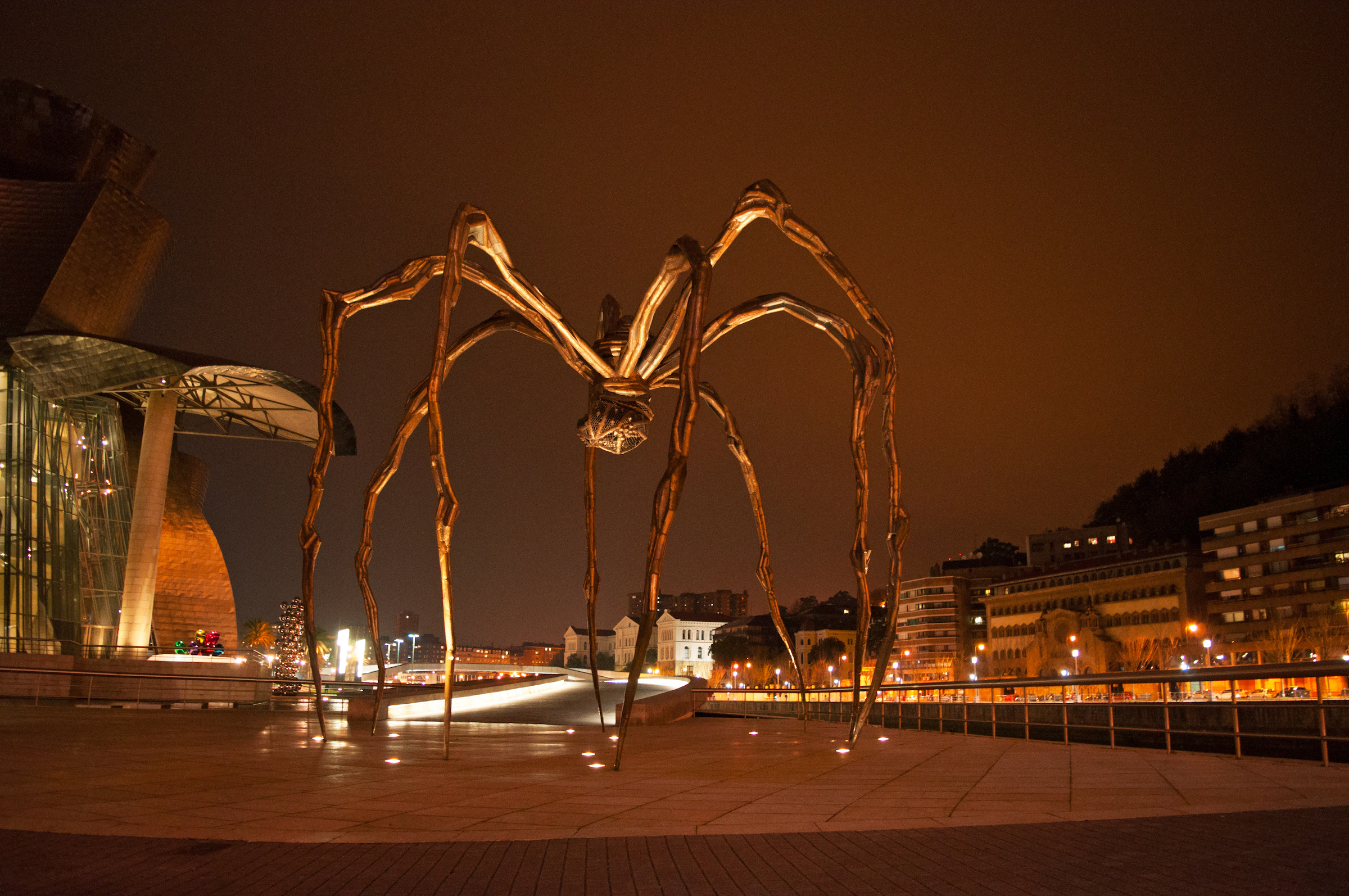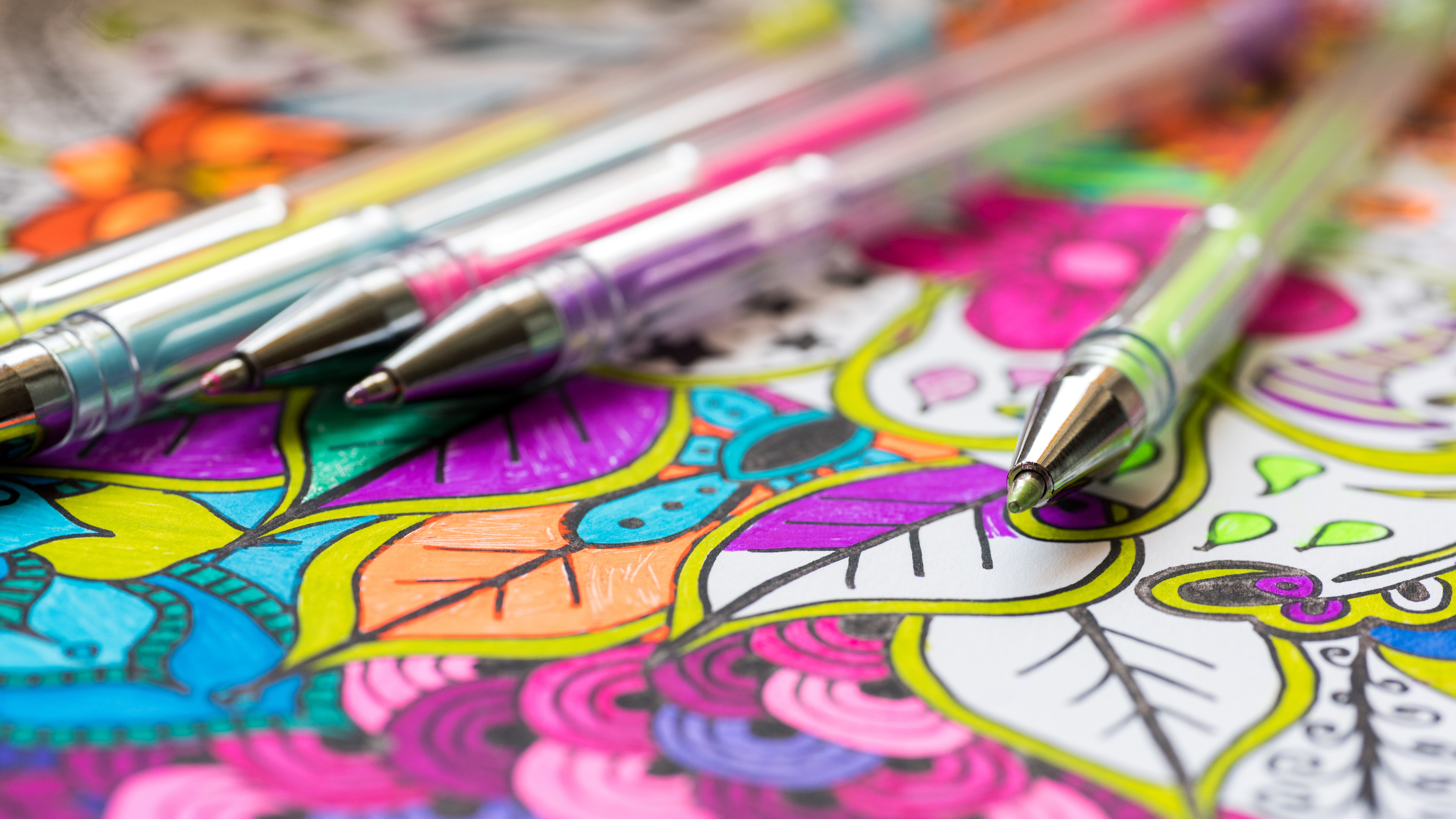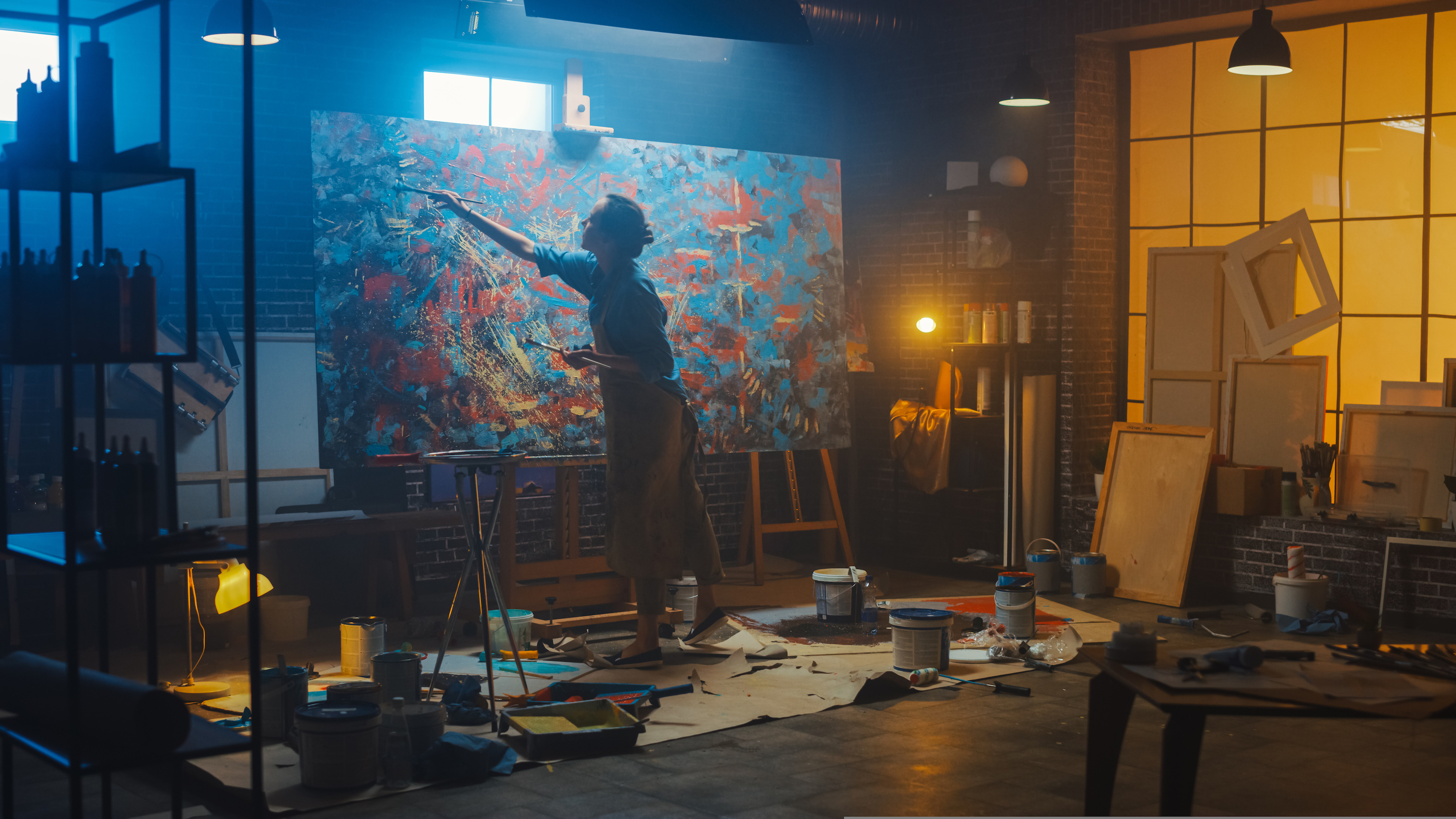Rego is a prime example of an artist who has used a wide knowledge of conventional high renaissance art to transvalue ideas of beauty. She calls her own work the “beautiful grotesque”. She takes quite lumpy bodies and finds in them the kind of rapture and intensity of a living being that she wants to honour. This task of transvaluing has been something that many contemporary artists whom I admire, such as Louise Bourgeois, have done. They’ve taken the conventions, the perceived ideas about what is beautiful, what is ideal, what is valued ... and they’ve tackled it. They’ve undermined and rewritten that story. I think for many contemporary artists like Paula Rego, it’s actually not very conscious and that’s a very important aspect. She just paints as she feels, with her extraordinary technique and her very sensitive seismographic attention to what’s going on in the world and people’s suffering. This is what a lot of contemporary artists are consciously doing. They’re consciously tackling, challenging, taking on what they wish to criticise. It’s a work of cultural inquiry, which many different modes of address can deal with. So, as a critic, I wish also to be part of that process.
Understanding the power of art
Writer and Professor in Creative Writing
- Art has the power to transvalue concepts – shift societally agreed norms and values – such as beauty and femininity.
- Images work upon us as ideals and as value systems, and they do it imperceptibly. We don’t really know how we’ve been affected by them.
- To understand the power of art, we should look to those who want to destroy it. Doing so reveals the core value systems behind both the cultures that created and revere the art and those that wish to destroy it.
- Art is a way of learning about and modelling the world around us.
Images inculcate value systems
One of the reasons that we need to think about the power of art, is this level of unconscious influence that images create. One of the things I’ve often been very puzzled by is how quick the zeitgeist tunes our eyes; how quickly, for example, the wrong cut of jeans is actually known to all young people. You may think that that’s a very far cry from fine art, or from art at all, but it isn’t actually. The question of how images work upon us is important here. They work upon us as ideals and as value systems. They inculcate value systems and they do it pretty much imperceptibly. We don’t really know how we’ve been affected.
In terms of the importance of renewing relationships with art, we see this in the current demonstrations and protests about the statues commemorating colonial tyrants like Rhodes or other figures from the Imperial past, the American past and the Civil War. There has to be re-engagement all the time and the living quality of art is actually a mobile quality, too, so the different values and their significance keep shifting.
I've written an essay about Paula Rego. She has made a triptych of women being trafficked. The triptych is a religious form that echoes Catholic Portugal, where she was born. The women suffering, as they’re being trafficked on boats and on carts and wagons, are figures of a form of contemporary martyrdom or contemporary victims of torture; so, there are religious connotations there. It’s a fabulous piece of draughtsmanship. She draws when she paints, as well, so it’s all very absorbing.
Transvaluing ideas of beauty

Photo by Naeblys
Understanding the power of art
The extraordinary thing is that a recognition of the power of art comes most strongly from those who want to destroy it. If you think about it, the people who destroyed the churches, Catholic statues and images in the Reformation in England were acknowledging that these false idols were blasphemous and went against the Commandments. They also wished to destroy them because of the power they had.
So, there is a way in which the power of the image has to be deleted because if it is allowed to continue and linger, it will affect you. It will continue to be present. There’s a rather primitive relationship between making an image of something and invoking its reality. This is one of the active powers of images. We have a rise in iconoclasm all over the world – a tremendous rise – and it’s not adventitious that it coincides with the rise in the art market. The two are connected.
The value of works of art is very much contested by certain individuals, in the case of paintings that are defaced in museums, but also by people who object to the way in which the West preserves and reveres works of art. It’s been argued, I think very correctly, that the Bamiyan Buddhas were destroyed in 2001 after surviving for thousands of years unharmed. They were destroyed by the Taliban, who resented the fact that the Americans — and their allies, including us, were saying that the sculptures had to be preserved while they were bombing people.
On money and value
The Taliban dynamited the Buddhas out of the mountain because they wanted to show that they cared more about men, women and children than they cared about art – which the corrupt West seemed to care about more. We think of iconoclasm as attacking the subjects of art. When we think of statues of Confederate generals in the Southern states of America; statues of former colonialists, like Colston, the British slave owner in Bristol, who was toppled recently and thrown into the water; of Cecil Rhodes in South Africa and the Rhodes Must Fall movement that spread from South Africa all the way to Oxford, where his statue still stands on the high street (the college has said that they will take it down) – here, the iconoclasm is directed at the subject matter, the person who is being revered. That’s one way that art has power. It tells a story and it preserves that story for eternity.
Sometimes it’s not the subject matter of the statue or the memorial, or even the history of the painting, it’s actually to do with the value that has been given to the work of art, as in the case of the Bamiyan Buddhas. You therefore get a lot of people rebelling against that imposition on them; that this thing is valued more than they would ever see in their life; that a nurse is being paid X or a street cleaner is being paid Y, and this artist for making a banana on a wall with a tape is being paid huge amounts of money.
So, that sense of the injustice, the idolatry there, is the idolatry of money falsely placed; the value has been falsely attributed. The power of art is also to spread some kind of comfort and strength; and I think in this very difficult period of the virus, that the power is to see something that has been made carefully, with skillful sensitivity.
Pleasure in the unpleasant

Photo by ABO PHOTOGRAPHY
It’s a solace and a source of survival and courage to make things. One of the great psychoanalysts, D. W. Winnicott, wrote a book called Playing and Reality, and he used art therapy to some extent. Other psychoanalysts followed him, like Marion Milner, in using art as part of a psychoanalytic inquiry, especially into children’s states of mind. Winnicott stresses that playing is reality. To represent the world, to model reality through toys or masks or things that you make, is a way of actually developing the self in relation to the world.
One of the paradoxes about the aesthetic experience – and this applies to written works as well – is that we take great pleasure in the unpleasant. Aristotle pointed out at the very beginning of Poetics that the human mind is made in such a way that things that would disgust, alarm and terrify us if we encountered them in real life can become objects of fascination and pleasure when seen in representations. One of the examples he gave was looking at corpses and at vile insects. This is something that I feel very strongly about as it’s one of the capacities of art to represent terror and horror in ways that make us understand those states.
We appreciate and take some sort of aesthetic pleasure in the image. If you think of Goya’s Disasters of War, it isn’t only a realistic portrait of disasters he saw during the Spanish War, it’s a condensation of his rage and outrage against the cruelties and needless, endless and useless violence that he and his fellow Spaniards had experienced.
Part of it is that we appreciate being in contact with a mind that has made us understand something that we would flinch or turn away from and not wish to understand. There are documents that are also warnings and that takes us to perhaps one of the functions that is associated with pleasure. Certainly, it is associated with appreciation and one of the functions of art – if you take an anthropological view, as I do – is to try and contain threat.
Art was used to avert dangers
It is possible that the cave paintings of animals were acts of propitiation against the danger that might come from the animals being slaughtered and used for human survival. They were painted or drawn on the walls of caves to invoke them, pay honour to them and placate them. That’s one function; but going back to Goya, the other function is to communicate that this shouldn’t happen ever again.
There is a way in which by freezing it into an artefact, condensing into it the passion that one feels against such things happening, that there is an attempt being made to avert it. The technical term is apotropaic. So, if you are an ancient Greek, then you make an image of Medusa. If you are a new classical architect, and you make an image of Medusa and you place it over the entrance to a building, bristling with snakes, with tongue-lolling teeth, that horror head will avert dangers, to still the possibility of further repeats of such terrors.
Diversity in the art world

Photo by Gorodenkoff
A very strong feature of the last 40 years has been the absolute rise of women artists. You know, when I was young, there was Elizabeth Frink in this country and Barbara Hepworth, but for very many reasons, psychological and social reasons, women were not prominent or influential as artists. That has now completely changed. Women have been in the forefront of innovation, of the new languages of art, the new techniques of the new subject matter of art, and that’s been a simply wonderful revolution. More and more young female artists are emerging. It’s that one generation has handed over to the next generation since the post-war period and that has been marvellously fertile. Many of the forerunners were minimalist painters, like Agnes Martin, but many are political and have been involved in these acts of transvaluing and challenging the status quo.
There were also many distinguished and marvellously inspired Black artists, but they were not prominent. They were not that influential and they were disregarded. However, we now have many Black artists who are helping to reimagine, to re-envision our values and to retell the story of the past, to correct some of the balance and to create equality through imagery. This is another aspect that I welcome, the power of art expressing itself. That’s on the good side; the bad side is the dissemination of clichés and ideals, false ideals, through the circulation of images online. This has very little to do with actual making of art, the making of works of art, and much more to do with fashion photography and celebrity culture.
Discover more about
The power of art
Warner, M. (2019, November). Memory as Fortification: Marina Warner speaks to Dubravka Ugrešić. Tank Magazine, 81, 120–133.
Warner, M. (2015, September 25). Falling idols. Publics monuments, Islamic State and contesting the story of the past. Frieze, 174.
Warner, M. (2012, August 24). Paula Rego: my hero. The Guardian.
Warner, M. (2003). An artist's dream world: Paula Rego. Tate Research Publication.
Warner, M. (1976). Alone of All Her Sex: The Myth and Cult of the Virgin Mary. Knopf.